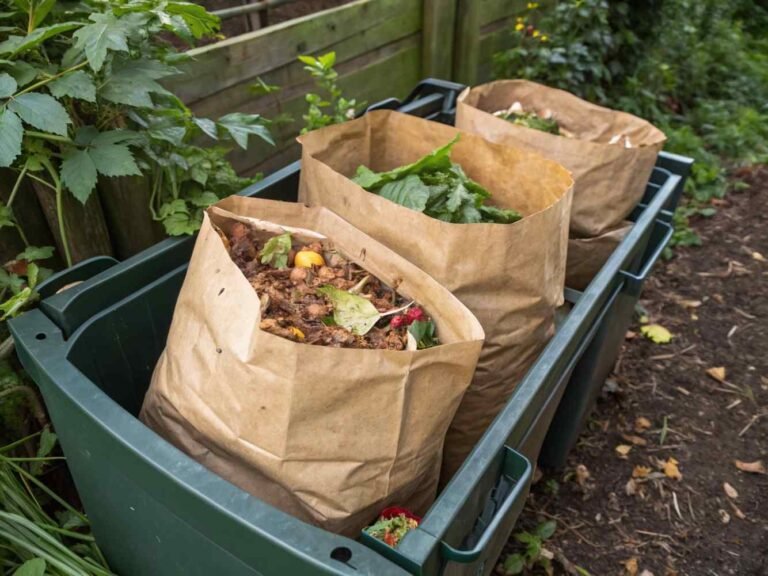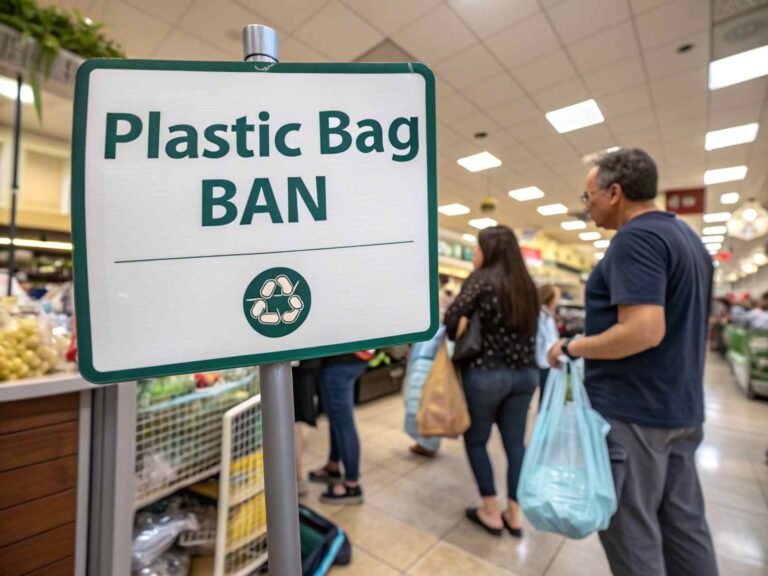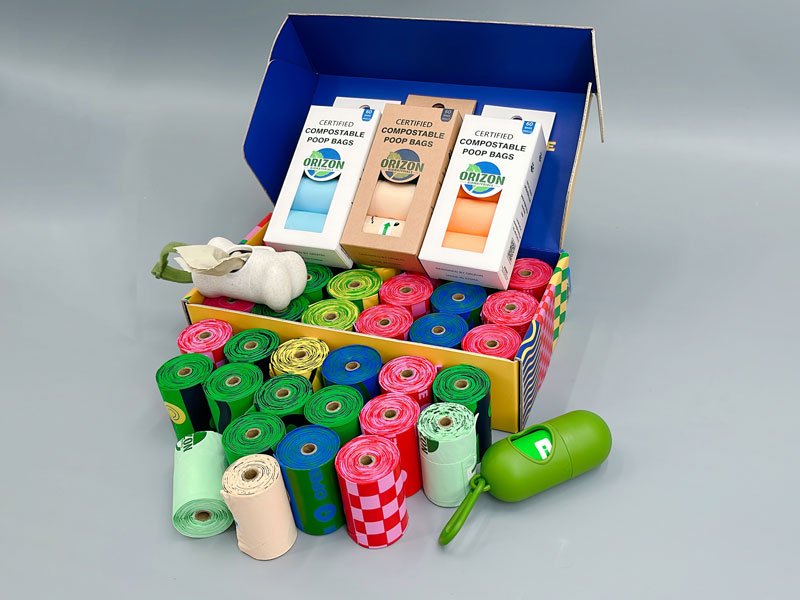In today’s world, more consumers and businesses are seeking eco-friendly alternatives to reduce their environmental footprint. But with so many products claiming to be "green," how can we know which ones truly make a difference?
This is where biodegradable certification comes in. It verifies that a product meets strict environmental standards, giving both buyers and sellers confidence that the product will break down naturally without harming the planet.
In this article, we’ll dive into what biodegradable certification is, how it works, and why it’s so important.
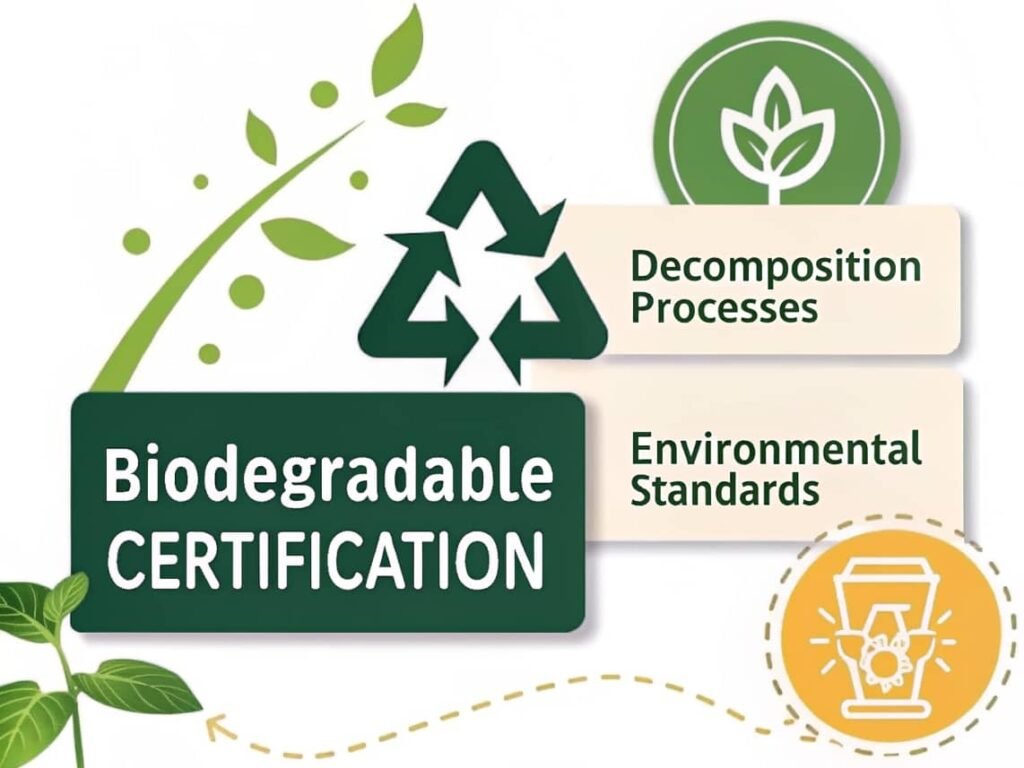
What is Biodegradable Certification?
Biodegradable certification is a formal process that verifies whether a product can naturally break down into harmless components (like water, carbon dioxide, and biomass) within a reasonable time and under specific environmental conditions.
It’s important to distinguish between biodegradable and compostable:
- Biodegradable: Can be broken down by natural processes, but the time and environment needed are not always specified.
- Compostable: Must break down quickly under composting conditions, leaving no toxic residue.
Certification ensures that a product’s environmental claims are real, preventing "greenwashing" — a practice where companies falsely advertise products as eco-friendly.
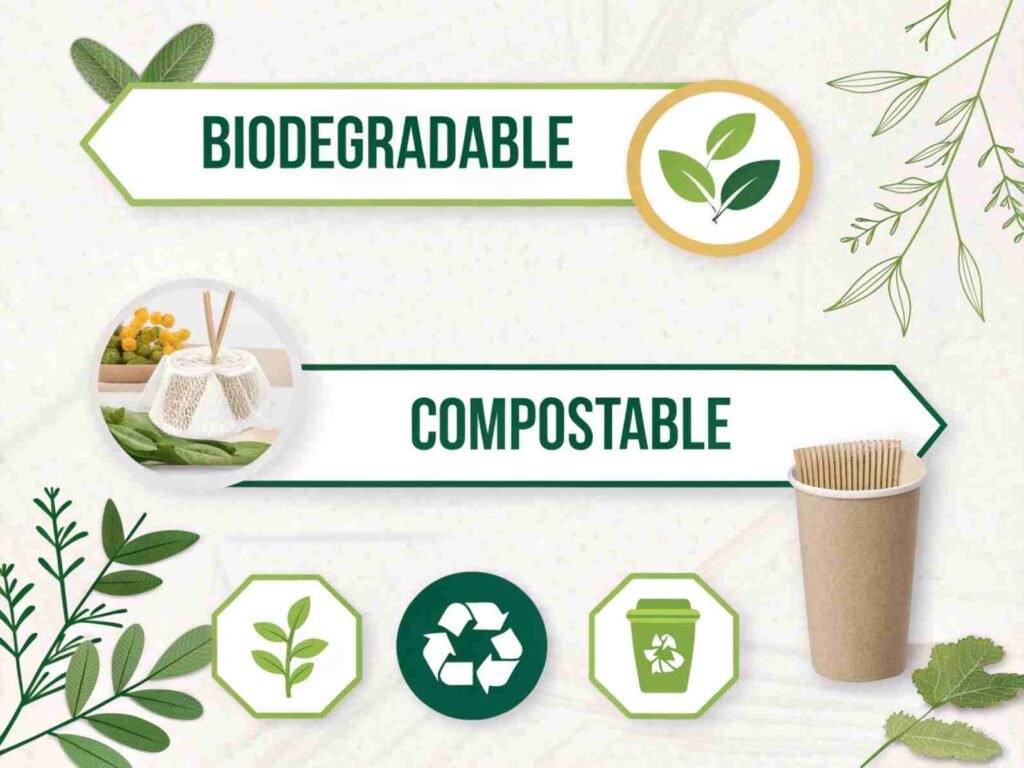
Biodegradable vs. Compostable
“Compostable” is a more specific and strict subset of “biodegradable.” It requires not only that the material biodegrades, but also that it meets the following conditions:
- Specific environment: Usually refers to specific conditions in industrial composting or home composting. Industrial composting facilities have higher temperatures (usually above 55-60°C) and more controlled humidity and microbial environments. Home composting conditions vary more and have lower temperatures.
- Time limit: Must be within a specific time frame (for example, industrial composting standards usually require a biodegradation rate of more than 90% within 180 days and disintegration into small fragments within 12 weeks).
- Decomposition products: The final compost (humus) formed by decomposition must be non-toxic, must not contain harmful heavy metals or chemicals, and must be able to support plant growth.
It can be understood that all compostable materials are biodegradable, but not all biodegradable materials meet the strict standards of compostability. For example, some plastics may biodegrade slowly in soil, but too slowly or incompletely.
Related articles: Ultimate Guide to Compostable Certifications (BPI, TUV, ASTM D6400)
Why Is Biodegradable Certification Important?
- Fighting greenwashing: One of the core functions of certification. Independent third-party certification bodies conduct rigorous testing of products according to recognized scientific standards. Passing certification means that product performance has been objectively verified, effectively preventing companies from using vague terms to make false or exaggerated claims.
- Build consumer trust: Faced with a wide range of products and complex environmental terms, consumers are often confused. A clear and recognizable certification mark (such as BPI, TÜV AUSTRIA's OK compost, ABA's seedling mark) is like a reliable "signpost", helping consumers quickly identify those products that truly meet specific environmental standards and buy them with confidence.
- Set clear standards: The certification process relies on detailed scientific testing methods. These tests not only evaluate biodegradability and disintegration, but also include heavy metal content analysis and phytotoxicity testing (to ensure the safety of compost products). This sets a clear, measurable and comparable performance benchmark for the industry.
- Promote industry norms: The existence of certification encourages companies to consider how to deal with their end-of-life products during the product design and material selection stages. It stimulates innovation, drives the industry towards more sustainable materials and technologies, and fosters healthy competition.
Major Biodegradable Certification Bodies
- BPI (Biodegradable Products Institute) — The leading certifier in North America for compostable and biodegradable products based on ASTM standards.
- TÜV Austria — Provides the well-known "OK Biodegradable" and "OK Compost" certifications, popular in Europe.
- DIN CERTCO — A German certifier that evaluates products under European and international standards.
- ABA (Australasian Bioplastics Association) — Offers certification for products in Australia and New Zealand.
| Certification Type | Applicable Scenario | Key Requirements | Notable Examples |
|---|---|---|---|
| EN 13432 | EU industrial composting | 90% degradation within 180 days | Compostable mailer bags |
| ASTM D6400 | US market access | Must pass toxicity tests | PLA cutlery |
| OK Compost | Home/industrial composting | Issued by TÜV Austria | Coffee capsules |
| BPI Certification | North America | Complies with both ASTM D6400 standards | Biodegradable straws |
| China GB/T Standard | China market compliance | Requires CMA-accredited test reports | Bio-based plastic bags |
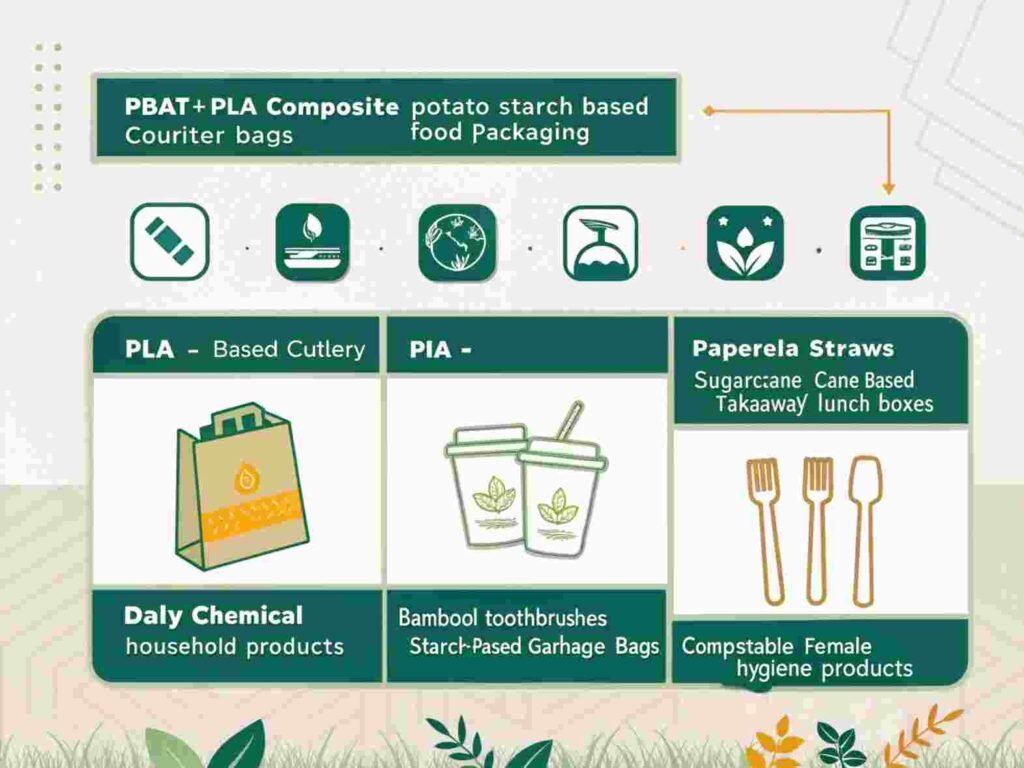
Biodegradable Products and Application Scenarios
- Packaging - Environmentally friendly packaging solutions
Courier bags/bubble bags: PBAT+PLA composite materials (compliant with EN 13432)
Food packaging film: potato starch-based transparent film (BPI certified)
Shockproof filler: mushroom mycelium packaging (100% naturally degradable) Typical case: corn starch filler particles used in Amazon's "Plastic-free Packaging" program
- Catering supplies - disposable biodegradable tableware
Knife, fork and spoon set: PLA material (ASTM D6400 standard)
Straw series:
Paper straws (home composting certification)
PLA straws (for cold drinks)
Coffee grounds straws (waste recycling)
Takeaway lunch boxes: sugarcane bagasse pressed into shape (GB/T 18006.3 standard)
- Daily chemicals and household products - green living supplies
Toothbrushes/combs: bamboo + PBSe (marine degradable materials)
Garbage bags: starch-based compostable garbage bags (OK Compost HOME certification)
Female hygiene products: corn fiber sanitary napkins (90 days soil degradation)
- Textiles - degradable fashion
T-shirts: Lyocell (eucalyptus fiber) + PHBV mycelium coating
Sneakers: algae foam soles (6 months water degradation)
Masks: PLA meltblown cloth (medical grade degradable)
- Agricultural products - ecological agricultural materials
Mulch: PBS double-degradable mulch (light/biological double degradation)
Seedling pots: coconut shell fiber pressing (direct planting in the soil)
Seed belt: recycled paper + natural adhesive
- Special field innovative products - cutting-edge biomaterials
Surgical sutures: PGA medical absorbable sutures
3D printing consumables: algae-based PLA filaments
Electronic component substrates: cellulose nanochips

Biodegradable Certification Process
- Pre-assessment
The company submits information about the product’s composition and intended use. The certifier determines if the product is eligible. - Laboratory Testing
Samples are sent to independent, approved laboratories for biodegradation and ecotoxicity testing. - Application Submission
The manufacturer submits full test reports, material safety data sheets, product photos, and technical specifications. - Technical Review
Certification bodies review all submitted information and test results. - Certification Approval
If the product passes, the company receives a license to use the certification mark on the product and marketing materials. - Ongoing Compliance
Annual renewal and audits ensure the product continues to meet certification standards.
Depending on the complexity, the full process can take between 4 to 12 months.
Benefits of Biodegradable Certification
For Businesses:
Improve Brand Reputation: Certification is a strong proof of a company's environmental commitment and can significantly enhance brand image and consumer favorability.
Enhance Market Competitiveness: In a market that is increasingly focused on sustainability, certified products are more likely to stand out and attract environmentally conscious consumers and partners.
Gain Market Access: Certain markets, retailers or government tenders may require products to have specific environmental certifications.
Reduce Risk: Avoid legal action, fines and reputation damage due to false or vague environmental claims.
Meet Supply Chain Requirements: Large companies are increasingly requiring their suppliers to provide products with sustainability certifications.
For Consumers:
Reliable Purchasing Decisions: Certification marks provide a simple and intuitive way to identify and choose products that truly meet environmental standards.
Ensure Environmental Benefits: Knowing that the purchased products can be decomposed as expected after proper disposal, reducing the environmental burden, and bringing psychological satisfaction and certainty.
Enhance Confidence in Environmental Actions: Let consumers feel that their choices are indeed contributing to protecting the environment.
For the environment:
Reduce plastic pollution (need to be disposed of correctly): Certified compostable products, if effectively collected and sent to the appropriate composting system (industrial or domestic), can be transformed into valuable soil conditioners, reducing plastic waste entering landfills or the natural environment.
Support the circular economy: Especially when compostable packaging is processed together with organic waste (such as food waste), it helps to achieve the recycling of organic resources.
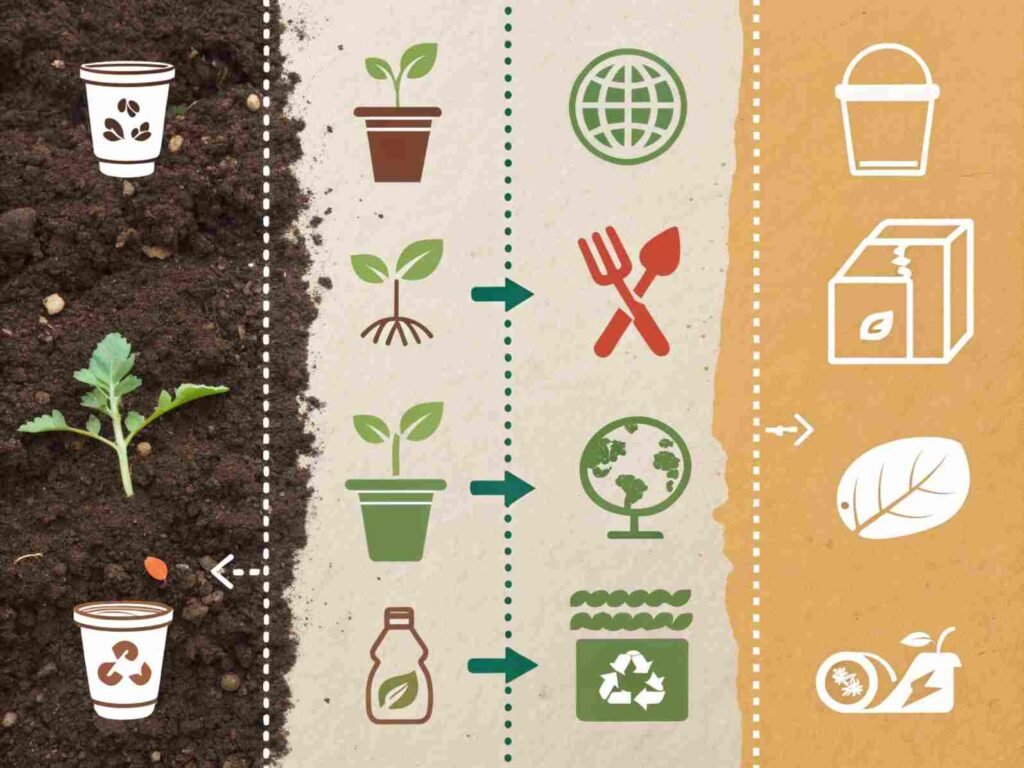
Challenges and Considerations for Biodegradable Certification
Consumer confusion remains: Even with certification marks, many consumers still find it difficult to distinguish between industrial composting, home composting, biodegradable, recyclable and their corresponding correct treatment methods. Continuous public education is needed.
High infrastructure dependence: The effectiveness of many certifications (especially industrial composting certification based on EN 13432/AS 4736) is highly dependent on a sound organic waste collection system and industrial composting facilities.
Uncertainty of home composting: The conditions in home compost bins (temperature, humidity, microbial activity, stirring frequency) vary greatly. Products marked as "home compostable" (such as AS 5810) may still decompose slowly or incompletely in improperly managed compost bins, although these factors are taken into account in their design.
Certification costs: For companies, especially startups and small and medium-sized enterprises, obtaining and maintaining certification requires considerable time and financial costs, which may constitute a certain barrier to entry.
"Panacea" myths and improper disposal: Even if a product is certified, its environmental benefits will be greatly reduced or even have a negative impact if it is discarded incorrectly (for example, thrown into a recycling bin, contaminating the recycling stream; or randomly discarded in the natural environment). Certification is not a substitute for responsible consumption behavior and proper waste management.
Life cycle perspective: Certification focuses on the "end of life" stage of the product. But the overall environmental impact of a product also depends on the source of its raw materials (is it fossil-based or bio-based? Is the source sustainable?), energy consumption and emissions in the production process, etc. We need to look at the sustainability of products from a more comprehensive life cycle assessment (LCA) perspective.
Future Biodegradable Materials and Certification
- Innovation in new materials: Scientists and engineers are developing new biomaterials (such as PHAs) that are more performant, more sustainably sourced, and effectively degrade in more diverse environments (including more challenging oceans, anoxic environments, or more efficient home composting).
- Improvement of standards and regulations: As attention to the issue of "greenwashing" increases, countries around the world are expected to introduce stricter regulations to regulate environmental claims and promote further refinement and unification of certification standards. Standards in areas such as "marine degradable" will be more prudent and scientific.
- Promotion of infrastructure construction: To fully realize the potential of compostable products, it is necessary to invest heavily in the construction and popularization of organic waste collection and treatment facilities. Policymakers, businesses and the public need to work together.
- Integration with the circular economy: Biodegradable/compostable materials will be more closely integrated into the broader circular economy strategy, working in synergy with other options (such as recycling and reuse) to jointly address waste challenges.
- The popularity of life cycle thinking: The assessment of the environmental impact of materials will increasingly emphasize the full life cycle perspective from "cradle to grave" or "cradle to cradle".
Conclusion:
In the pursuit of sustainable development, biodegradable certification plays a vital role. It brings necessary transparency and credibility to a market full of vague or even misleading information. It helps responsible companies prove their environmental commitment and empowers consumers to make smarter choices that are more in line with their values.
The real environmental benefits of "biodegradable" or "compostable" ultimately depend on how we dispose of these products and whether we have the infrastructure to support such disposal. More importantly, we must not forget the fundamental principles of environmental protection: source reduction and recycling are always the best strategies.

